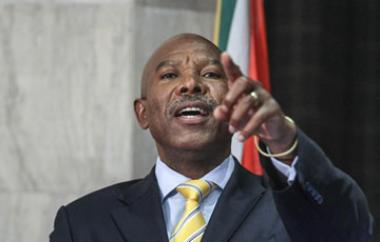Reserve Bank keeps rates unchanged at 6%
 Reserve Bank Governor Lesetja Kganyago on Wednesday announced repo rate to remain unchanged at 6 percent.
Reserve Bank Governor Lesetja Kganyago on Wednesday announced repo rate to remain unchanged at 6 percent.
The Reserve Bank has left the repo rate unchanged at 6% on Wednesday, siting the outlook for domestic economic growth deterioration.
Most analysts had predicted no change. The MPC had a lot to consider following the US Federal Reserve's decision to keep rate hikes on hold.
"The combination of sharply slowing growth and rising inflation compounds the dilemma facing monetary policy," Governor Lesetja Kganyago told a news conference.
The governor said that the committee would continue to monitor developments closely and will not hesitate to act appropriately should the risks to the inflation outlook deteriorate materially.
“As before, any future moves remain highly data dependent,” he said.
The decision on the repo rate follows on the Monetary Policy Committee's (MPC) three-day meeting that began on Monday.
At the last MPC meeting in July, the central bank hiked up the repo rate by 25 basis points.
The decision comes at the same time that Statistics South Africa (Stats SA) released the figures for Consumer Price Index (CPI) showing that CPI slowed to 4.6% in August from 5% in July. The figure was below market expectation of 4.7%.
When coming to the outlook on growth, Governor Kganyago said that a further contraction in Gross Domestic Product (GDP) in the third quarter is unlikely. This as the country’s GDP contracted by 1.3% in the second quarter.
Meanwhile, the central bank said that the rand depreciated by 9% against the dollar since the MPC’S last meeting posing an upside risk to the inflation outlook.
“The MPC is also concerned about domestic growth prospects, with the economy contracting in the second quarter. Growth is expected to remain constrained by global developments and associated uncertainty and volatility, low business and consumer confidence and electricity supply shortages,” explained the governor.
In a research note following the release of the CPI, Nedbank economists said that the biggest threat to the inflation outlook remains the weaker currency, but so far the pass-through from the currency to inflation has been rather muted.
Another inflationary threat is food prices which should start showing up in inflation in the coming months.
“These two threats will though be partly counteracted by softer oil and fuel prices, with the possibility that inflation, while rising in the next few months, will not breach the Reserve Bank's 6 % upper target range in December as we earlier expected.
"The latest inflation print is a further reason why the Reserve Bank should not raise interest rates this afternoon. Other factors include the 1.3 % decline in GDP over the second quarter, the hesitation of the Federal Reserve at their September meeting and the improved inflation outlook because of falling oil prices,” said the economists.
The economists said the Reserve Bank will probably increase rates at the November meeting in anticipation of a US rate hike before year-end













